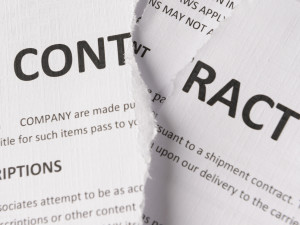
Given the enormous complexities that come with international expansion, one would think that most companies develop some type of strategy before going global. But, in speaking with many apparel companies, that doesn’t appear to be the case.
The truth is…. the majority of brands first go global merely because an opportunity presented itself…not because it was the right market, the correct business model or the best partner they could find for their brand. After all…it’s much easier this way….no work involved and no delay in getting the business started.
Opportunistic or Strategic? Which approach best describes your company?
If you find that your company is operating opportunistically, don’t despair. All of us who have done international business for a long period of time have been opportunistic at one time or another.
So the question is….does this approach work or should one develop a clear strategy and follow the lengthy protocol that consultants and international text books clearly spell out?
While there is something to be said about “testing the waters” in a new market, the chance of long-term success without the proper preparation is not in your favor. Unfortunately, companies often change course after going overseas for one or more of the following reasons:
• Poor risk/reward…It is very common for brands to enter markets with a number of small specialty stores who may have approached them at trade shows or on-line. The end result is typically a lot of work and headaches (shipping, collecting, servicing) for very little money.
• Shipping or logistical issues due to a “trial by error” approach. International is always a distraction to your domestic business and requires special processes in order to run the business properly. Not having an international plan probably means that your domestic staff, with little or no experience, will be responsible for the success of the business. A “trial by error” approach often leads to operational issues, and in turn, a frustrated staff and angry customers and international partners.
• Collection problems. Servicing too many small customers or dealing with unproven distributors who may not be credit-worthy, often results in collection problems and in turn, inventory issues due to holding product until you get paid.
• Poor looking retail presentation. Not having established approval procedures for retail, marketing etc. or proper training of your international partners almost always leads to a poor retail presentation and ultimately, lack-luster sales and damage to your brand.
• Product performance and/or pricing issues. A lack of research of the market, the consumer and the competition usually results in product performance issues caused by unforeseen consumer needs and wants and an underestimation of the local competition.
• Communication break-down. Communication problems usually occur from the beginning of the relationship and are even more likely when dealing with countries with strong cultural differences.
As we all know, it is harder to fix a problem once it has happened than starting from scratch.
It is no different with international business. Once your brand has failed in a country or is on a downward spiral, it is very difficult to turn the business around. The retailers have cooled on the brand, your international partners are less motivated, and you, the brand owner, are frustrated by the time, money and resources that were spent for nothing!
You Don’t Have To Be That Company!!!
Prior to expanding into an overseas market, make sure that you have a well thought out strategy. Planning and research is key! As with anything in life, nothing worth having happens quickly.
If you truly want to develop a successful international business that has long-term potential, consider the following recommendations before taking the plunge:
1) Develop an overall international strategy for your company that includes sub-strategies for each country. This often starts with an honest assessment of your company and brand’s strengths and weaknesses. What challenges might you face? Where do you need help? What must you adjust in your operations, product, organization etc. to give you the best probability of success?
2) Do a thorough market assessment. This will help you determine which country to target and the proper business model that will work best for your particular brand, company and product in that market. One size does not fit all in international business. Every market is different!
3) Make sure you find the best local partner or partners in that country to represent you. Without the right partner, you might as well forget #1 and #2 above even if you have a great brand.
Treat this process with the same discrimination as you would the person you might date and think of marrying.
After all, this is a marriage…. and with all marriages, it can be a rewarding, fulfilling experience or a nightmare that will cost you a lot of money, time and heartache!
4) Make sure that your company is set up to logistically manage the business. If you plan to export and are having supply chain issues in your home market, the chance of servicing another market properly is highly unlikely. There may be duties, import restrictions, labeling requirements etc. to consider and they are different for every country (which brings us to #5 below).
5) Invest in talent and/or bring in experts with international apparel experience in the particular function and region that you need managed. I know that sounds obvious but you’d be amazed at how many companies assume that they can just move their domestic staff into international roles.
Seriously….if you are a US apparel company, would you hire a person with no US sales or apparel experience to head up your US sales division? If the answer is “no”, why would it be different for another country?
6) Make sure that your company is financially sound and prepared to invest in the business. Developing an international business is a long-term commitment. The rewards do not come quickly or easily in most cases so be prepared to spend money before you see significant profit.
7) Have an exit plan. If you find that you jumped into an international business prematurely and are hemorrhaging money with no end in site ….cut your losses and change course! Trust your instincts. Deep down, you know if this business feels right and will survive.
In short, international expansion can be highly rewarding and lucrative if you are committed and prepared! Think long-term by developing a comprehensive strategy for your brand before moving forward. I promise that it will pay off down the road and give you the best likelihood of success!





